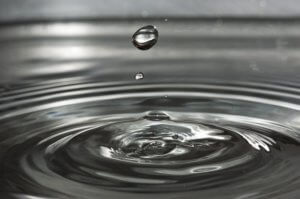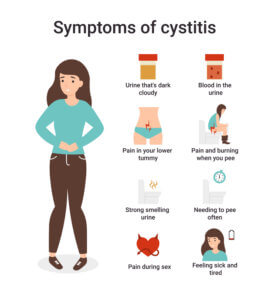Urine isn’t normally a topic discussed in casual conversation, but it can be an important indicator of your overall health. In some cases, urine color even serves as one of the first warning signs that something is wrong.
Changes to the color of your urine aren’t necessarily reason to panic— especially if they are short-lived— but most people aren’t sure which urine colors are normal and which are not (or who to ask).
With that in mind, here’s everything you didn’t know you needed to know about urine, including urine color meaning and a few warning signs to watch out for when you pee.
Urine 101: What Really Happens When You Pee
Urine is made up of about 95% water, but the rest of it is a mixture of toxins, waste products, and excess nutrients, including urea, salt, electrolytes, and potassium.
Essentially, urine is “created” by your kidneys. They filter waste products and excess water from your blood to make the liquid mixture we call urine or pee. Urine then travels from your kidneys to your bladder via small tubes known as ureters.
When your bladder gets full enough, it sends you a signal to get rid of the stored urine by way of another tube called the urethra.
As you can tell from this simplified explanation, the everyday act of peeing is actually a very important one because it gets wastes and toxins out of your body. One specific waste product known as urobilin, which forms from old red blood cells being broken down, is responsible for the normally yellowish color of your pee.
Urine color is most likely to change based on water intake, the food you eat, and certain medications. However, some color changes can indicate an underlying disease or dysfunction somewhere within your body.
So what’s normal and what’s not? Read on to find out.
Urine Color Meaning: What’s Healthy & When to Be Concerned
Clear to Pale Yellow

Urine that is clear or pale yellow in color is considered normal and means you are well hydrated. In fact, it’s the high amount of water present in your pee that makes it look pale rather than a darker yellow color.
The only “caution” with completely colorless urine is that it could be a sign you are over hydrating. Clear urine is fine from time to time, but it should have at least a tint of yellow if you are taking in the right amount of water.
Colorless pee may also happen if you are taking a diuretic (aka a water pill), which forces a higher volume of water out of your body.
Yellow
Yellow is the color most people associate with urine and is, unsurprisingly, a completely normal hue for your pee to be.
However, it’s important to realize that urine can fall in a wide spectrum of yellow shades (possibly all in the same day) and all are completely healthy. If yours is anywhere from light yellow to a darker almost-amber shade, there’s nothing to worry about.
Basically, urine will turn a lighter or darker shade based not only on how much water you drink, but also on how much urobilin (sometimes called urochrome) is present.
More urobilin and/or less water means a darker shade of yellow and vice versa.
Neon Urine
Have you ever glanced in the toilet and seen an almost fluorescent shade of yellow? It happens to most people from time to time.
The good news is that the urine color meaning of fluorescent yellow is typically harmless. Most often, the fluorescent coloring comes from the presence of vitamins— usually B vitamins— that are being excreted from your body via your pee.
This is not unusual if you take a multivitamin or some other kind of supplement. Your body frequently can’t absorb all of the nutrients in a supplement, so the excess simply passes out of your body.
There’s really only cause for concern if you have fluorescent urine and are not taking any supplemental vitamins.
Amber or Brown

Light amber as a urine color is on the border of normal, but it likely indicates that you are a bit dehydrated.
Darker shades of brown are an indication that you could be even more seriously dehydrated. This causes waste products to become more concentrated in your urine, giving it a darker color. If this is the case, upping your water intake should result in a lighter color the next time you pee.
Certain medications, including specific antibiotics, can also turn urine dark brown. This is a “normal” side effect of these medications, and the color should go back to normal when you stop taking them.
More rarely, brown urine could be a sign of a liver disorder like hepatitis or cirrhosis. A condition called porphyria, which involves certain chemicals building up within your body, can also cause urine to turn brown or rusty-colored.
Orange
Orange as a urine color is not usually healthy, but it could be simply a side effect of some medications, including certain laxatives, anti-inflammatories, and chemotherapy drugs.
If you aren’t taking medication, orange urine is typically a sign of dehydration or a more serious issue. The most likely health culprit is a bile duct or liver problem, although it could also be an indication of adult-onset jaundice— a condition that colors your skin and mucous membranes yellow.
Orange-colored urine combined with light-colored stools is a more serious warning sign of a bile or liver issue. Be sure to see your doctor if you notice both of these symptoms together.
Pink to Red
The color meaning of pink or red urine is usually either completely benign or a serious cause for concern.
Deeply pigmented fruits and vegetables— think beets, blueberries, or rhubarb— can give your urine a pinkish or reddish tinge if you consume enough of them in one sitting. A few drugs, like phenazopyridine or senna-containing laxatives, can also make urine look red or reddish orange.
However, if you haven’t eaten any red-pigmented foods lately or started a new medication, pink or red pee is likely a sign of blood in your urine.
Blood in urine (technically known as hematuria) can have many possible causes, but it’s never normal. It could be a sign of a urinary tract infection, prostate problem, or even cancer. The bottom line is that you should see your doctor immediately to determine the underlying issue.
Blue or Green
![]()
Blue or green urine is highly unusual, so you may be surprised to learn it’s often not cause for alarm. That’s because the blue or green color frequently comes from food dyes or the dyes used for kidney and bladder function tests and will go away on its own.
A few medications can also produce green- or blue-colored pee (it should be listed as a side effect).
In very rare cases, blue/green urine is a sign of a genetic disorder called hypercalcemia, which involves high blood calcium levels. It can also be the result of a Pseudomonas aeruginosa bacterial infection but, again, this is very rare.
Cloudy Urine
Normally, urine should be transparent no matter what color it is. Cloudiness is often a sign of a urinary tract infection, although it can also be related to other issues like diabetes, a bacterial infection, kidney problems, or prostate problems.
During pregnancy, cloudy urine is a potential warning sign for preeclampsia, which is a serious condition.
If your urine remains cloudy consistently, go get a checkup with your physician.
Other Warning Signs to Watch for in Urine
Urine color has a lot of meaning when it comes to your health, but it isn’t the only characteristic you should be paying attention to. Here are a few other ways your body might be telling you something is wrong.
Strong/Unpleasant Smell
You’ve probably noticed that there are certain foods that give your pee a strange smell. (Asparagus, anyone?)
But if you have not eaten any of these foods recently and notice that your urine smells strong and unpleasant, something is probably going on. Most likely, the cause is some type of an infection— like a urinary tract infection— that will need treatment.
On the other hand, if your urine smells sweet or fruity, this may be an indicator of high blood sugar or diabetes. It happens because your body gets rid of some of the excess sugar through urine, making it smell sweeter.
Foam
A few bubbles are normal after peeing, but very foamy or frothy urine is cause for concern.
Foam is most often an indicator of high protein levels in your urine, which could be an early warning sign of a serious condition like kidney disease. It may also be related to a digestive disorder like diverticulitis or Crohn’s disease.
Frequent or Infrequent Urges

It may not be at the top of your mind, but you probably have a subconscious sense of how often you typically have to pee throughout the day. This is important because if you notice yourself feeling “the urge” more or less frequently, this is another potential warning sign that something is going on.
Suddenly feeling a frequent urge to urinate (not accompanied by drinking a lot of liquids) can be a symptom of many issues: a urinary tract infection, prostate issues, kidney issues, bladder conditions, etc.
Infrequent urination could simply mean that you haven’t been drinking enough water and are dehydrated. Or it could stem from a kidney issue, including a blockage or damage caused by medication.
Either way, if your urge to go changes noticeably, go see your doctor about it.
Inability to Empty Bladder
If you can’t empty your bladder, this is a condition known as urinary retention. It can take one of two forms— either you can’t pee at all, or you can’t fully empty urine from your bladder.
Either type of urinary retention could be the result of a partial or full blockage somewhere in your urinary tract or a problem with the muscles in your bladder. For men, a blockage can stem from an enlarged prostate, which makes it difficult to both start urination and completely empty the bladder.
If you ever feel like you need to pee but find you can’t, seek treatment immediately to avoid more serious problems.
Common Urinary Disorders to Be Aware Of
Being aware of the meaning of urine color and other urine-related warning signs can help you get on top of a potential disorder. To boost your awareness even more, here’s a quick overview of a few of the most common urinary disorders and symptoms to watch out for.
Urinary Tract Infections

Urinary tract infections (UTIs) are one of the most common urological issues. They can happen to anyone, but adult women are 30 times more likely to develop a UTI than men. Though at a lower risk, men are most likely to develop an infection once they get over age 50.
Some of the most common symptoms of UTIs include:
- A frequent urge to urinate
- Strong or foul smelling urine
- Cloudy urine
- Blood in urine
- Pain or a burning sensation when peeing
Prostate Enlargement
Benign prostatic hyperplasia (BPH) is a condition in which the prostate is enlarged but not cancerous. It’s the most common prostate problem for men and usually occurs after age 50.
Though not technically a urinary disorder, an enlarged prostate can cause a host of urological symptoms, including:
- Urinary retention
- A frequent urge to urinate
- Urinary urgency (you can’t delay urination)
- Trouble starting to urinate
- A weak or interrupted urine stream
- Pain during urination
- Unusual smell to urine
Kidney Stones or Kidney Disease
Kidney stones are hard deposits that form when certain minerals and acid salts are concentrated in your urine. Smaller stones can pass through your urinary tract without a problem, but if they get too large, you may notice symptoms like:
- Blood in urine
- Pain in your back, abdomen, or groin
- Pain or burning sensation while urinating
- Cloudy urine
- Urine with an unpleasant smell
- Frequent urination or urinating in small amounts
Kidney disease is more serious and involves the gradual loss of kidney function. Because your kidneys basically create urine, signs that something is wrong can show up there first, including:
- Cloudy or foamy urine
- Difficulty urinating
- Frequent or infrequent urination
- Urine with an unpleasant smell
- Painful urination
Cystitis

Cystitis is a general term for irritation and inflammation of the bladder and urethra. It can accompany a UTI and may turn into a more serious complication, like kidney infection, if not addressed. Common symptoms are similar to other urinary disorders and include:
- Cloudy urine
- Dark-colored urine
- Blood in urine
- Frequent or urgent urination
- Urine with an unpleasant smell
- Pain or burning sensation while urinating
- Lower abdominal pain
NEXT UP: Today You Will Get THE FULL BODY FIX — a $797 Value — FREE
Invaluable! If you are in your 40s, 50s, 60s, 70s, or beyond, this complete anti-aging & longevity fitness program is a must. Guided by today’s widely recognized top expert in anti-aging fitness, Robbie Stahl, you will be shown how to do all the safest & proven most effective exercises for peak functional fitness in every area of your body – your feet and legs, hips and pelvis, lower and upper back, arms, shoulders, and neck!
 Because here’s the truth: most people in their middle years and golden years make huge exercise mistakes that stifle progress and, worse, lead to joint issues, posture issues, and a wide range of injuries. (In fact, 87% of those who exercise experience some form of injury!)
Because here’s the truth: most people in their middle years and golden years make huge exercise mistakes that stifle progress and, worse, lead to joint issues, posture issues, and a wide range of injuries. (In fact, 87% of those who exercise experience some form of injury!)
Thankfully, after over 15,000 hours of dedicated research, Robbie Stahl has created this revolutionary and deeply evidence-based 5-class series that goes light years beyond the often dangerously incorrect guidance from personal trainers and online fitness “gurus”.
He will show you, step-by-step, how to correctly do all the safest and most effective exercises – for your peak strength, balance, mobility and more – while avoiding or exacerbating joint issues, posture and mobility issues, and injuries.
You will even discover where your personal misalignments are (a topic that even today’s most popular fitness “experts” often get wrong), along with clear guidance on how to correct them!
This highly acclaimed Full Body Fix has already helped tens of thousands of people in their 40s, 50s, 60s, 70s and beyond avoid and overcome pain and other issues and achieve full body functionality, so they can maintain true fitness and independence now and very late into life.
And, YES, you really are getting this entire and vital Full Body Fix program — a $797 value! — FREE right away when you order the complete recordings and transcripts of the new LET’S GET PERSONAL: The Ultimate Health Aging Summit today! Even better, you will get 15 other truly outstanding gifts that will make a monumental difference in your health and life, as you are about to see…
BEST OF ALL? With today’s big Early Bird special, you are getting the LET’S GET PERSONAL recordings and written transcripts for 66% off their regular price of $119 — just $67 TOTAL today for everything!



Excellant article ,thanks a lot .
nice explanation for it
Very useful day to day info. Thank you.
Thank you! Very interesting and useful article.
Very beneficial and fascinating information! Thank you!!
Usefule information especially for someone with diabetes
Very informative, Brian. Great job sharing this important wellness topic.
Great information for both men and women. Thank you! While not the focus of your article, there are simple ways, in some instances, for women to avoid getting a UTI. Always wipe from front to back, and always get up to pee after intercourse.
My MD gave me great info.
Take D-Mannose whenever you feel that UTI urge. If taken soon enough, you can stop/prevent UTI. D-Mannose is a sugar that UTI bugs like more than your tissue, they cling onto it and get pee’d out. I was having 7 to 8 UTI/ year, None in past 5 years w. D-Mannose.
Information like this makes our lives better managed, Thank you, great article
Thank you for this very informative and beneficial article!
Enjoyed the completeness
Very interesting and informative.
Very educational – thank you.
Great article, very informative, thank you.
Very informative and self explanatory.
Great overview of information for everyone.
We appreciate you,
Interesting & informative. I am always interested in the Whys. Thank You!
Thank you very much for giving us good information without trying to sell something! Bless you!
Informative, practical, well structured article. Thanks
I agree with the other commenters. This is a very interesting and helpful article. Thanks so much for posting it!
Love how you advertise some info and then just give it—without asking for emails and names and stuffing more ads.
And that was truly valuable concise info, not full of fluff, watered down teasing tidbits of partial info.
and love your jokes.
thanks for sharing. good info !
Thanks a lot for the excellent information about urine indication.
Respected Sirs/madam, the vital article of our physical system is a noteworthy. Very good advise. Am very happy.
Interesting
Thanks
This information is very informative and useful.
Information we need to be weary of everyday.
Thank you for sharing.
Appreciate much.
Thank you! Informative!
The information great . What was missing was is how to reverse it naturally if you are vegan.
Hopefully you will advise us on that if that is possible of course
Not double-voiding can also cause retention problems but many people, especially those who get frequent UTIs, know nothing about it. Worth discussing.
Very useful information.
Very informative. I have sometimes wondered when the colour is different and now I know. Thanks
Occasionally my urine has a nutty smell. No one has been able to tell me why. Was hopping you could. My A1C is under 6.0.
Thank you for the good info AND for not offering a looonng video with long winded nonsense.
Very informative. Thanks Brian!
the more we know about ourselves, the better. worth the read thank you.
Thank you for sharing this information with us. It is very educational and helpful.
Interesting, thank you. I will be saving this for future reference. I have experienced much of this information and can relate to it. By saving it I will know if I need to see my doctor.
I’m a 70 year old woman in good health. I suddenly had trouble starting urine flowing. I’d never had this problem before and assumed it was a UTI. My doc prescribed an antibiotic which was designed for just this purpose. After taking it the required number of days, I told her it was having no effect. She said that she must have misdiagnosed my problem and it probably was a neurological problem. She sent me for an MRI and then to speak to a neurologist. This doctor studied the MRI and explained that one of my lumbar vertebrae was compressing the nerve running through the back of the vertebra. This was caused by too much sitting (I’ve been a computer programmer for my entire career and certainly was sitting way too much.) and had no cure. He did not recommend any kind of surgery unless the problem became unbearable.
I was glad my doctor could readily change her mind and send me to the appropriate expert.
I suspect this is a fairly common problem since an awful lot of us sit too much.
Thank you for sharing this valuable story! Might save someone else from frustration and wasting time. What a great doc you have!
Lots of good information here especially regarding infection symptoms. Thanks!
semen in the urethra can also cause foamy urine.
Everybody should know this. Thank so much
I have been concerned about my pee. Now I know what to do. Thanks a lot.
very much appreciated,very informative indeed,will pass on this eye opening info to others esp.my patients
Very informative. Thanks for the article.
Thanks so much Brian. Very interesting and informative.
my son produced brown sandy urine and thankfully called his wife. He had a cancerous kidney removed and 3 years later he is still clear.
Excellent info
Thank You for a very informative Article.
Thanks for this article it’s very informative.
I am very happy that I have no problem and I’m 73 years. it gives me peace of mind.
This is so informative. I will keep it for future reference as needed. Thank you so much for sharing.
very interesting about urine colors as I learn new to me. thanks explanation to us…
Very informative. Thank you very much!
Super simple explanations as ever – BIG thank you to you and all your health researchers & practitioners.
Very interesting. I enjoyed reading it.
Helpful information, thanks
Good information.
Very informative!! Thank you!!
Thank you – appreciate all that you do for humanity & grateful for the information you shared. Look forward to the summit in the next few days 😀
Very informative, appreciate it so much. Now I know I have been worrying needlessly. Thank you so much.
I have noticed another way a change in odor occurs that is not drug related. It happens when I take the supplement NAC.